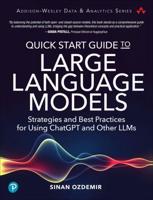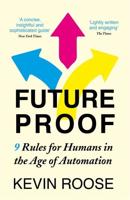Publisher's Synopsis
Mastering Fine-Tuning with LLMs: From Basics to Advanced Techniques" provides a comprehensive guide to optimizing large language models (LLMs) for various applications. This book is designed for data scientists, machine learning engineers, and AI enthusiasts who want to harness the power of fine-tuning to enhance LLMs' performance and adapt them to specific tasks.
The book is structured into eight parts, each focusing on different aspects of fine-tuning LLMs. It begins with an introduction to large language models, including their evolution, key concepts, and applications such as natural language understanding, text generation, and conversational AI.
Part II delves into the fundamentals of fine-tuning, covering essential topics like data preparation, setting up the fine-tuning environment, and understanding the differences between pre-training and fine-tuning.
In Part III, the book explores various fine-tuning techniques, including supervised, unsupervised, and self-supervised learning, along with transfer learning and domain adaptation. It provides step-by-step guides and case studies to illustrate how these techniques can be applied in real-world scenarios.
Part IV focuses on advanced fine-tuning strategies, such as hyperparameter tuning, handling imbalanced and limited data, and optimizing training performance. It offers practical advice on managing computational resources and improving efficiency.
Part V addresses evaluating and validating fine-tuned models, discussing evaluation metrics, validation techniques, and error analysis to ensure model reliability and performance.
Part VI covers deployment and maintenance, including strategies for deploying models in production, monitoring performance, and updating models to adapt to new data.
In Part VII, the book delves into ethical considerations and cost management, emphasizing the importance of fairness, transparency, and cost-effective practices in AI development.
Finally, Part VIII presents hands-on projects and case studies, allowing readers to apply their knowledge in practical scenarios. The book concludes with a look at future trends in LLM fine-tuning and the evolving role of LLMs in AI.










